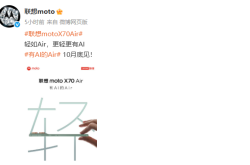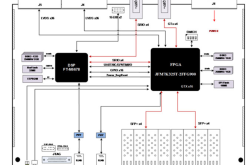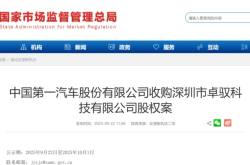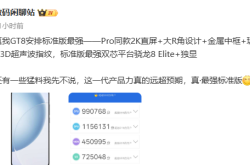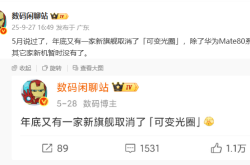Joint Venture Counterattack: The Absence of South Korean Brands
![]() 09/29 2025
09/29 2025
![]() 345
345
Global Market Behemoth, Yet Struggling in the Chinese Market
TEXT
The year 2025 is widely anticipated as a pivotal period for joint venture vehicles to stage a comeback. However, the Hyundai Kia Group, a representative of South Korean automobiles, finds itself embroiled in a starkly contradictory duality.
On one hand, the group has secured the third position in global sales for three consecutive years, reaching a staggering 7.23 million units in 2024, underscoring its formidable international competitiveness. Conversely, in the Chinese market, South Korean cars have witnessed a precipitous decline, plummeting from a peak of 1.8 million annual sales to fewer than 250,000 units, with a market share dwindling to less than 1%.
Behind this 'two extremes' scenario lie the deep-seated challenges and strategic missteps that South Korean cars confront in the Chinese market. Recently, a senior executive from the China Automotive Engineering Research Institute was reported for corruption with real names, with Hyundai China being prominently implicated. This revelation further exposes potential governance crises in its localization endeavors.
From Dominance to Marginalization
South Korean cars have traversed a tumultuous path in the Chinese market.
The year 2016 marked a zenith for South Korean cars in China, with Beijing Hyundai and Dongfeng Yueda Kia setting sales records of 1.14 million and 650,000 units, respectively. Collectively, they accounted for nearly 1.8 million units for the year, representing 36% of Hyundai Group's global sales.
However, the post-peak scenario has been grim. By 2024, Beijing Hyundai's sales had dwindled to 157,000 units, while Yueda Kia's retail sales in China for the same year stood at a mere 80,000 units.
In stark contrast to their robust global performance, the continuous decline of South Korean cars in the Chinese market underscores the grave failure of their localization strategy.
Their presence in the new energy sector is even more feeble. In the Chinese market, where the penetration rate of new energy vehicles has surpassed 50%, South Korean cars have virtually lost their voice.
Although Beijing Hyundai designated 2025 as the 'first year of the new energy brand' as early as 2022 and outlined a detailed product matrix and sales targets, as of 2025, it remains ensnared in the dilemma of having no pure electric models available for sale.
Kia's sole two electric models, the EV5 and EV6, have both underperformed in the market. The Kia EV6, priced at over 400,000 yuan, is an imported SUV that has naturally made little impact in the domestic market. The EV5, while relatively more affordable with a starting price of 149,800 yuan, sold only 211 units in August this year. More alarmingly, Kia has set its retail sales target in China for 2025 at a mere 81,000 units, just 1,000 units higher than in 2024, seemingly abandoning any growth ambitions in the Chinese market.
It is noteworthy that in 2024, out of Yueda Kia's 248,000 units in sales, over 170,000 units were destined for export, accounting for nearly 70%. Beijing Hyundai's export proportion also reached 30%. This 'heavy export, light localization' strategy is widely perceived by the market as a passive response to the Chinese market.
Financial data further underscores the severity of South Korean cars' predicament in China. Jiangsu Yueda Kia Automobile Co., Ltd. is insolvent, with total assets of 2.82 trillion won and total liabilities of 3.74 trillion won as of December 31, 2024, resulting in an asset-liability ratio of 132%.
Beijing Hyundai, on the other hand, incurred cumulative losses of 13.082 billion yuan from 2022 to September 2024, compelling both shareholders to jointly inject $1.095 billion at the end of 2024 to sustain operations.
Interestingly, despite the continuous contraction of their business in China, senior executives from the Hyundai Kia Group occasionally issue bold statements such as 'we can afford to burn in the Chinese market,' attempting to project their determination and financial strength for long-term operations.
However, their actual actions suggest that such statements are more akin to strategic intimidation and reassurance to global investors rather than a genuine call to arms for a counterattack in the Chinese market.
In Hyundai Motor's global strategy, the Chinese market appears to have been marginalized. At the first Overseas CEO Investor Day held in September 2025, Hyundai Motor reiterated its goal of achieving global sales of 5.55 million units by 2030, with electric vehicle sales expected to reach 3.3 million units, accounting for more than 60%, and planned over 18 hybrid models and a comprehensive electric vehicle product line.
Hyundai Motor also proposed a 'regional electrification' approach, adopting differentiated strategies in various markets. For instance, it focuses on pure electric vehicles in Europe, where policy incentives are stronger, and promotes hybrid vehicles in the North American and Japanese-Korean markets.
Nevertheless, the efficacy of these global strategies in the Chinese market remains questionable. The introduction speed of South Korean cars' electrification products still lags significantly behind the pace of the Chinese market and faces challenges of low brand recognition.
Core of the Predicament: Localization Failure and Decision-Making Gridlock
One of the most significant impediments to South Korean cars' transformation in China is inadequate localization, particularly at the decision-making level.
Yin Yongyi, Vice President of Sales and Branding at Hyundai Motor China; Xu Zhengxu, Director of Product Strategy; and Cui Douhe, General Manager of Hydrogen Fuel Cell System Company, are all South Koreans who steer the strategic implementation of Hyundai Motor in the Chinese market across their respective domains of sales, product strategy, and hydrogen energy business.
Hyundai has also endeavored to appoint local senior executives. Between 2019 and 2020, it hired Li Feng as Vice President of Hyundai Motor Group (China) and General Manager of Dongfeng Yueda Kia, introduced Xiang Dongping as Vice President of Hyundai Motor Group (China) and Deputy General Manager and Sales Director of Beijing Hyundai, and appointed Li Hongpeng as Chief Business Officer of Hyundai Motor Group (China).
However, these professional managers all relinquished their positions within more than a year of joining. The market has speculated extensively about this situation, pondering whether it stemmed from conflicts between Chinese and South Korean management or performance pressure leading to a breakdown in trust. The recent corruption scandal may offer another perspective.
On September 26, the Jiangsu Economic News reported that a senior executive from China Automotive Engineering Research Institute Co., Ltd. (China Automotive Engineering Research) was reported with real names for engaging in interest transfer and academic bribery in the information security equipment project of Hyundai Motor R&D Center (China) Co., Ltd. The letter alleged that the project contract amount was over 9 million yuan, and after subcontracting, the actual execution price was only 8 million yuan, with about 3 million yuan earmarked 'for relevant individuals at China Automotive Engineering Research' and about 2 million yuan paid to Hyundai China.
Although this matter still requires investigation and confirmation, if true, it will expose potential risks in Hyundai's supply chain management and cooperation mechanisms in China. Such gray operations may not only exacerbate internal decision-making gridlock and a lack of trust but also reflect potential governance loopholes in South Korean cars' localized cooperation in China, further impeding their already sluggish strategic response speed.
Nowadays, Hyundai Motor has not only failed to effectively cater to the needs of Chinese consumers, such as in intelligent cockpits, in-vehicle ecosystems, and rapidly iterating products, but its models, especially in terms of intelligent experience, are increasingly lagging behind Chinese brand products. Coupled with the bribery scandal, it has further eroded consumer trust in its products.
In contrast, other multinational automakers are accelerating their localization processes. Toyota introduced its Chinese chief engineer system for the first time during the Shanghai Auto Show, transferring R&D decision-making power from its Japanese headquarters to China.
SAIC Volkswagen further deepened its 'in China, for China' localization strategy, with the concentrated debut of the ID.ERA concept car, Audi A5L Sportback, and Audi E5 Sportback during the Shanghai Auto Show, demonstrating the rapid implementation of joint venture 2.0 achievements. Entering the second half of 2025, SAIC Volkswagen launched a series of heavyweight new models, with the new Lamando L making a heavyweight debut on July 30, the all-new SAIC Audi A5L Sportback officially launching on August 1, the new Lamando L officially launching in August, and the SAIC Volkswagen Pro family undergoing a comprehensive refresh in September.
The domestic new energy market also welcomed a rare visitor, Buick, an American automaker, which recently launched a high-end new energy brand, Zhi Jing, led by a Chinese local team. The first model, Zhi Jing L7, has already made its debut, a mid-to-large-sized extended-range sedan.
Various joint venture automakers are vigorously pushing forward their localization processes, while only South Korean cars seem to be stumbling.
Faced with increasingly fierce market competition, whether South Korean cars can timely adjust their strategies, strengthen localized R&D and decision-making, and launch products that meet the needs of Chinese consumers has become the linchpin for their return to the mainstream. Otherwise, in the world's largest automotive market, South Korean cars are likely to continue to be marginalized and eventually completely lose their voice.

